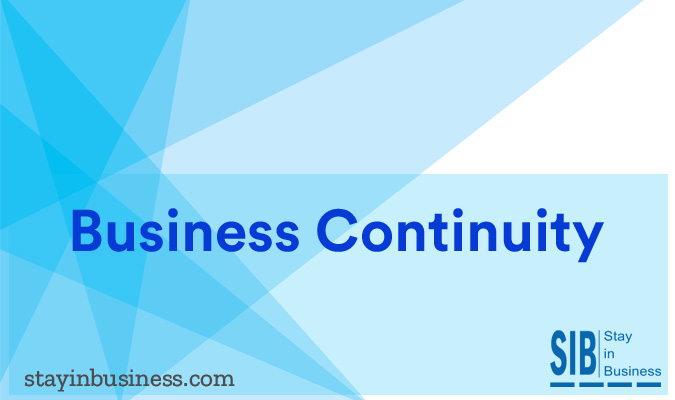
USE BUSINESS CONTINUITY SOFTWARE TO PREPARE A BUSINESS CONTINUITY PLAN
All business, both big and small, must have a Business Continuity plan to ensure that the business survives different types of emergencies, from loss of key personnel to physical destruction of property. The chances of such catastrophes may be remote, but a smart manager will always be prepared for the worst. To create a workable business plan, lots of data and training needs to be collated, to ensure the Business Continuity plan is viable.
Information required for a good Business Continuity plan are:
- Data from business impact analysis and risk assessment studies
- Acceptable Recovery Time Objective and Recovery Point Objectives of the business
- Contact details of all aspects of the business, which includes both in-house and external contact details. The contact list should include details of core team for business continuity, suppliers and contractors, stakeholders, emergency services etc.
- Details of how specific activities are launched, so that the business can be re-started etc. should be determined.
- Inputs required for carrying out the exercise and as well as maintenance and modifications of the plan over time.
To formulate a successful business continuity plan, requires careful planning a detail that is rooted in reality. This exercise can be streamlined by use of business continuity software. Business Continuity software generally uses database management systems to help create the plan. Since each department in the business may require a unique plan, you should choose software that has various templates to suit all the needs of the business. By using business continuity software, it is possible to carry out detailed business impact analyses and also carry out risk assessment. The business continuity software will also give you the flexibility to carry out plan exercises to test its efficacy. Depending on the functionality and features of the business continuity software price may be as much as US$100,000. However, there are much cheaper versions which cost as low as $500 which may fit budgets of small business. Most of these software systems are server based and use database management systems. They can be hosted in house or externally.
Installation of Business Continuity Software:
- Set up a business continuity project plan to determine the finances required to get the plan installed.
- What are the requirements for the business to keep functioning during a disaster?
- Determine the management requirements for business continuity of the organization
- Find out the technical and operational requirements to keep the business functioning. Will it need a separate stand-alone server for the business continuity plan?
- Analyse the user requirements
- Determine if any changes will be required in the desktop configuration
- Address integration issues between the business continuity plan and existing systems/platforms
- Analyse and determine the requirements of database management systems
- Analyse security issues such as access control, passwords etc.
- Review the proposed designed and configuration to see if it is compatible with the requirements of the business.
- Determine all other factors that will hinder a smooth transition from normal operations to the business continuity plan. They should be adequately addressed.
- After thorough analysis of all inputs, suitable software can be evaluated and selected.
- If man power and expertise is limited, a hosted plan such as the one offered by Stay In Business is a good solution.
Integrating Business Continuity software in your business:
- Ensure that the senior management of the company is on board and have approved the business continuity plan.
- Make sure the staff are fully aware and have given inputs for formulating the business continuity plan. This will make them look forward to the new plan with anticipation rather than view it with suspicion and consternation.
- Impart as much training as possible and use the data obtained to produce hard copies of training and operations manuals.
- Do not expect the entire system to be integrated in a day. This will be an ongoing process and could take several weeks before it is fully functional.
- Remember, the software does not replace humans. It helps to manage data more efficiently.
- Suppliers, contractors and vendors have to upgrade their systems to enable acceptance of data from your business without any hitch.
By using available business continuity software diligently after thoroughly analysing your business needs, it can be an effective tool in disaster recovery.





